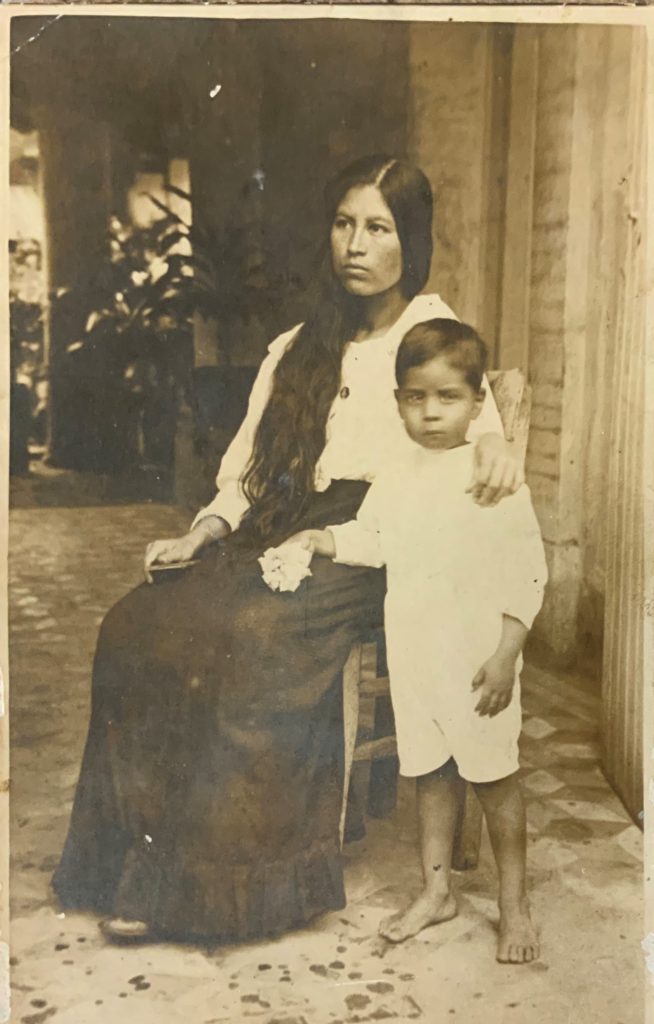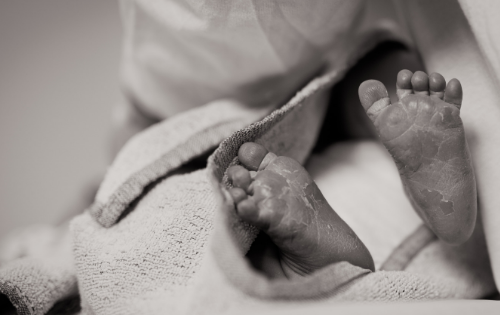
The People Behind the Characters of The Music of Pedro
There’s still one more week to pre-order the book before our Kickstarter campaign ends! Your pledge will also pre-purchase tickets to the launch fiesta, so if you’re planning to come to that or if you just want a limited-edition signed print of The Music of Pedro with a few other perks, backing our Kickstarter is the way to go!
In the meantime, I asked my dad to put together some information on some of the real people who inspired his characters.
The inspirations for Francesco and Lea (Itzel) Arriaga:
Francesco and Lea (Itzel) Arriaga (Pedro’s birthparents) are inspired by a set of Cuevas ancestors from the 1700s as well as my dad’s paternal grandparents.
Juan Antonio de Cuebas Sosa was born in May of 1710 in Jalisco to Spanish immigrants: Francisco de Cuebas Garzia and Doña Manuela de Sosa Garibi. At 17, Juan married an indigenous slave who worked on his parents’ hacienda. Her name was Andrea de la Cruz. Her parents and ancestry are unknown.
In the story, Francesco is the eldest son of a wealthy hacendado in the late 1800s. Lea’s Nahuatl name is Itzel and her family are indigenous Aztecs who have worked the Arriaga land for generations. She resists Francesco’s seduction attempts until he proves himself trustworthy. After he is cut off from his parents for marrying her, they go to Pivámoc to start a new life together.
My dad’s paternal grandparents, Jose de Jesus Cuevas (Papá Chuy) and Leopolda Ysais (Mamá Pola), also inspired Francesco and Lea.

“Papá Chuy was a clever merchant who built a large center of commerce where many things were manufactured, bought, and resold in the mining town of Pivámoc (Pihuamo). They had eighteen children and the ninth boy, my father Antonio, was the chosen one to become the priest of the family.”
Francesco and Lea build a homestead together while Pivámoc is still blossoming as a mining town. Instead of eighteen children, they stop at three before gifting their fourth (Pedro) to Francesco’s sister Dina. The Arriaga homestead mirrors Papá Chuy’s as a seat of family, faith, tradition, and industry.
The inspirations for Dina, Pedro, and Margarita
Dina’s character was inspired by one of Papá Chuy’s sisters: “There was an old sister of Papá Chuy’s, who I knew as Aunt Tocha and who lived at the back of their property in a small house. She was a lonely woman and very mysterious to me when I was a child.” After accepting Pedro as her son, Dina too lives at the back of Francesco’s property, but her past as a retired professor is the story my dad invented for his mysterious aunt.
Before converting to Mormonism, my dad and his family were Roman Catholic. Francesco plans for Pedro to become a Catholic priest in the same way that Papá Chuy chose my grandpa Antonio to fill that role: “At a young age [Antonio] was sent to the seminary to become a priest, but he ran away from the seminary and came back about two years later to work in his father’s business. He played the violin and wanted to become a medical doctor. He was my inspiration for Pedro, but I, his son, was the one who attended The Nun School in the local abbey and became a scholar.” My dad went on to become an engineer while my uncle Carlos became the medical doctor of the family.
“This brings me to my Margarita character, the beautiful, intelligent, sheltered, and inexperienced nun.”
Margarita is inspired by my grandma, but her romance with Grandpa Antonio follows a much different course than Margarita’s with Pedro: “Antonio met a beautiful 16-year-old farmer girl during one of his store deliveries to Guadalajara. She was the middle child of an Italian father and an Indian mother. Antonio had made a wager with his brother that he would marry the first beautiful girl that would cross his path. Emilia Pizano de Flores, my mother, was that girl. Antonio and Emilia decided to elope because her parents said no to his request for her hand in marriage. He smuggled her out of her house and left her in the local church of her town, leaving her to the charge of the priest, who was his friend from the seminary. He sheltered her there until Antonio came back three days later to marry her. The only ones present to the ceremony besides them were the priest and their two godparents.”

The inspirations for Margarita’s parents, Cristobal and Isabella Olivieri
My grandma, to whom the book is also dedicated, not only inspires the character of Margarita, but her image too, which my brother captured exquisitely in one of the illustrations for the book. Her parents are Santiago Pizano (Chago) and Concepcion Flores (Conchita). They opposed my grandpa’s marriage to their daughter, and Margarita’s parents offer similar conflict in the book.
The inspirations for Julio and others
“My Aunt Eva Cuevas was my inspiration for Ana, the restaurant owner [Francesco and Dina’s younger sister]. Eva was the most wonderful cook and sweetest lady ever. She was always full of joy and complimentary of everyone. She had a beautiful voice and sang like an angel.
“The only ones in the book who I named by real names are my Aunt Hermelinda (Melinda) her daughter Noemi (Mimi) and her son Julio, who had not been born strangled by his cord like his fictional counterpart and was a very kind man. My memories of Melinda and my cousin Mimi are ones dear to my heart.”
In the book, Julio almost dies at birth and the lack of oxygen leaves him with a learning disability. He and Pedro become fast and inseparable friends. His character is defined by his pure-hearted kindness and loyalty.
The inspirations for the villains
The antagonists of The Music of Pedro seek to corral and dominate. They lack empathy and hold to rigid worldviews that jeopardize the protags’ goals for success and happiness. There are the two obvious villains while the rest can be called peripheral; my dad’s schoolyard bully laid the foundation for the character Alejandro and the second antagonist is an amalgamation of classist, sexist, and racist ideologies that amplify difference and distrust over human sympathy and equity.
My dad pulled from the real to tell a fictional story that would serve as an introduction to his own inner workings, his sense of justice and an idealized standard of being. I tasked myself in my rewrites with honoring his intentions while opening the story to additional layers of interpretation that speak to my own inner workings. The Music of Pedro is a love story and I’m so excited to share it—the story and the love that created it.




